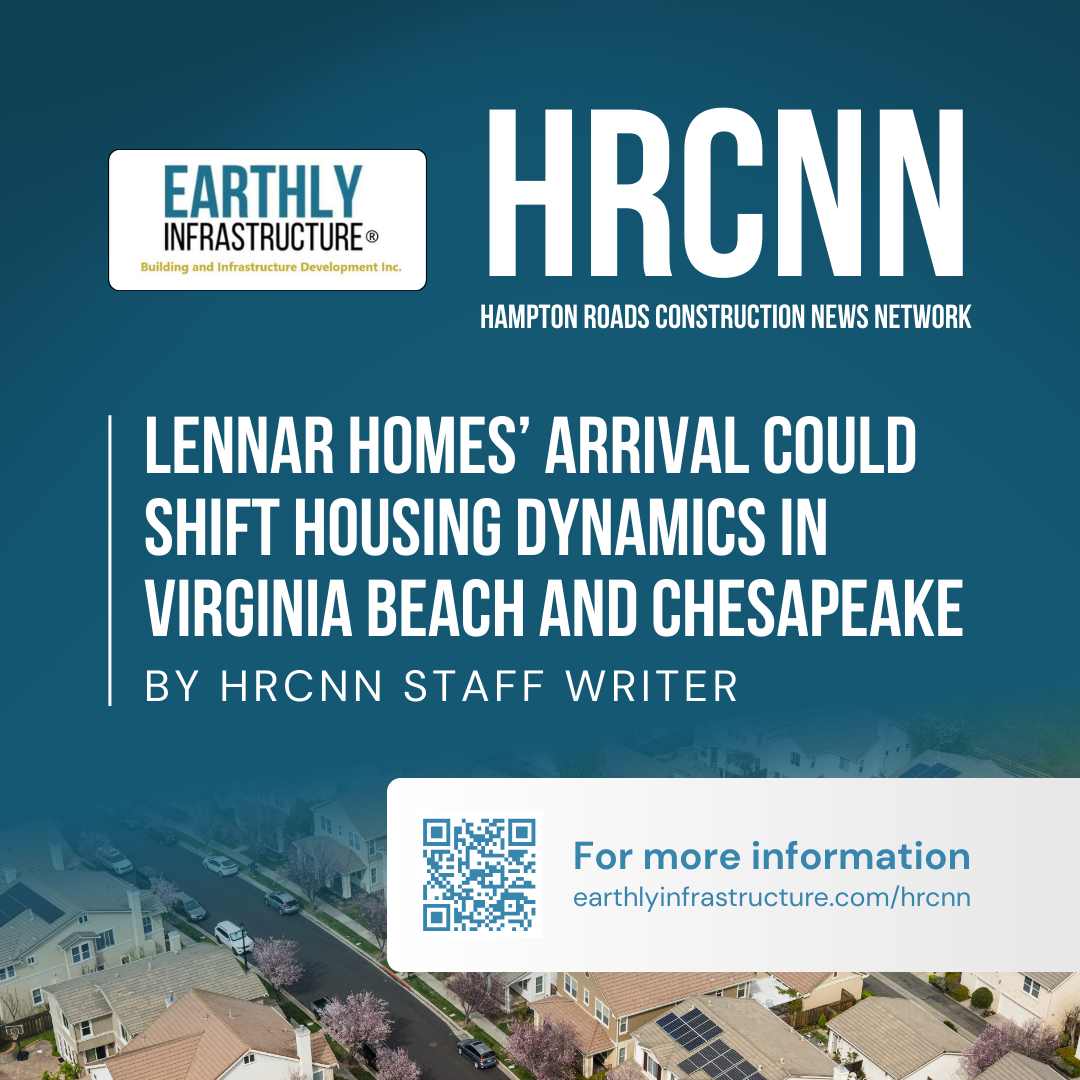By HRCNN Staff Writer
In Virginia’s ever-evolving housing market, few names carry the national weight of Lennar Homes. The company’s potential entry into Virginia Beach and Chesapeake signals more than just another development cycle—it suggests a realignment of how Hampton Roads approaches growth, affordability, and neighborhood planning.
Lennar, one of the largest homebuilders in the United States, has built a reputation for creating expansive communities with a focus on efficiency, accessibility, and scale. Should their presence expand locally, residents and policymakers alike will face questions about the balance between supply and demand, zoning discipline, and infrastructure capacity.
Virginia Beach and Chesapeake are already grappling with significant housing pressures, including affordability concerns, shifting demographics, and the need to diversify housing stock. A Lennar-driven community, with its signature blend of suburban design and packaged amenities, could provide much-needed relief. Yet, as with any large-scale development, the impact on schools, traffic, and public utilities will need to be carefully assessed.
Contractors and subcontractors in the region stand to benefit from Lennar’s arrival. Local firms accustomed to delivering mid-scale residential work could see opportunities expand, as Lennar typically engages a broad network of trade partners. For Hampton Roads builders, the challenge will be to maintain quality and community integration at the pace Lennar is known for nationwide.
Equally important is how municipalities respond. Chesapeake, with its abundance of developable land, and Virginia Beach, with its careful land-use planning, will likely approach Lennar projects through different regulatory lenses. Planning commissions and zoning boards will be tasked with ensuring that Lennar’s footprint aligns with long-term comprehensive plans and neighborhood character.
For residents, the trade-offs will be tangible. On the one hand, new housing supply could stabilize prices and open doors for younger families eager to put down roots. On the other hand, rapid suburbanization carries risks for open space preservation, traffic congestion, and stormwater management—issues already pressing for coastal communities.
What makes Lennar’s potential entry most significant is scale. While local builders have sustained Hampton Roads’ housing market for decades, Lennar’s size and efficiency could accelerate growth beyond current expectations. Whether that growth strengthens the region’s resilience or strains its systems will depend on how city leaders, contractors, and residents manage the next chapter.
About HRCNN
The Hampton Roads Construction News Network (HRCNN) is a regional news platform dedicated to providing timely, accurate, and in-depth coverage of construction, infrastructure, zoning, and development across Hampton Roads and Virginia. HRCNN serves as a trusted source for industry professionals and the public, ensuring transparency and insight into the forces shaping our built environment.



